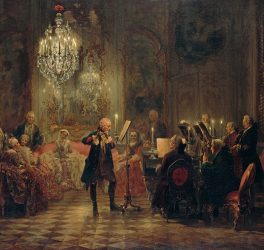until 25.10. | #4797ARTatBerlin | EBENSPERGER BERLIN show from Sunday, 7 September 2025 the exhibition “What Holds Us” by the artist Meg Stuart.
In What Holds Us the Ebensperger Gallery welcomes artist Meg Stuart with a series of videos in which her choreographic practice and knowledge come into light.
The exhibition unfolds as a “journey of presences,” reverberating like an evolving landscape. In the videos, Meg Stuart directs her poetic and imaginative sensibility toward the body, situated within desolate landscapes of undefined spaces, brutalist architectures in decay or strangely familiar environments. Through an ongoing dialogue between body and space, these performed presences reveal the worldly conditions – and the quietly overlooked potentials – of embodiment.
Her work seeks out uncanny spaces – not as a subject but as an anchor. The person is shown intersecting and internally negotiating with a world that carries and has shaped them and is, in turn, continuously being shaped by them. The setting – the Ebensperger building, a bunker imbued with political history – invites us to take part in a collective activation of a labyrinthine space, where its visual conditions hold the secrets for us to be perceived and discovered. Choreographies echo the space, walking the thin line between presence and absence.
Meg Stuart has never taken the codified architectural theatre space for granted. Rather, she illuminates that stage by transforming its very codes, treating light, sound and image with equal importance to movement and the body. Her shift into public and non-theatrical spaces follows the same interest: investigating not-yet-codified perspectives and challenging the restrictions of the supposed performance.
In doing so, she brings something into being that transcends the divide between private and public, between art space and living space. Here, dualities – of the everyday and the unusual, the sociable and the intimate, of inside and outside – find a place to unravel: in the real world. Within this expanded field, known frameworks between spectatorship and presence are redefined. The absent audience emerges as an imaginative “total face,” the world in which the body appears occurs as an imaginative “total image.” This allows Meg Stuart to reflect on presence and its representation in an expanded way; an imaginative realm of appearances rises as response. While we perceive and engage with the visual world, she puts into question what is visible and receptive, creating new identities and possible worlds.
In search for connection within these fragmented and proposed realities, nature appears as a symbolic order. Earth and water (The way down and Ripples respectively) are elements functioning as fibers through which bodily perspectives are both grounded and disturbed.
The way down, 2025
In this subdued video poem we witness an encounter – is it a date? Two people seem to reach an agreement and disappear. A call to the exercise of unknown paths; a mythical setting in which to reflect on the vulnerability and elegance of choice and surrender. Fall. Learn. Adjust. Repeat.
Ripples, 2021
In Ripples we enter a world without angle or orientation, a shallow water, under the surface a disturbing stillness. With the expanded circles created by each movement, the inhabitants drift, glide and gradually shift into a tactile dialogue with the water. Their presence becomes cause and response to the water’s shifting surface. The ripples expand and interact, boundaries dissolve, life becomes water where deeper dialogues can emerge. Circular communication moves like water itself, cyclical and in flux of becoming. Meaning radiates, folds back, and returns in quiet echoes.
The landscape in view, cut off from external context, becomes a space with its own temporality. In this place of no solidity, presence is echoed by a cloud of dust or circles of rippling water, tracing invisible conversations and unfolding communication.
We zoom out, then zoom in. By examining presence more closely, details appear. Meg Stuart has long been fascinated by the micro-gesture. “The tiny enables expression in daily life,” she says. Shifting focus to the weight or the sound of the gestures offers a new frame for observing the person a little bit differently. The choreographic detailing hints at a motivational “inner side” of what we see, whereas we can only look at the “outside,” at the image.
In a series of portraits, the gaze is the portal to this space of negotiation. The gaze protects the face by hiding it. The face, as a primary canvas, articulates the barrier of visibility: it simultaneously reveals and conceals, performing a masquerade without ever offering a full picture. The photographic portrait reflects an abstraction of our time in daily existence, from which Stuart draws an unconventional sense: the transformational dimension of life. The portraits show flickering emotions, flirty self-awareness, joyful play with the unreal, slipping in and out of the performed identities. Here the picture evolves and enters into a realm of dialogue. It conveys both an engagement with and a resistance to the social contract, to the expectations of public appearance. It vividly illustrates the state of being locked into the gaze while being fully present.
Portraits, 2008–2025
“The face is at once the irreparable being-exposed of humans and the very opening in which they hide and stay hidden. The face is the only location of community, the only possible city.” — Giorgio Agamben
In 2008, Meg Stuart created a one-shot video inspired by the face-to-face videos of Vito Acconci. In it, she explored time capsules of compressed presence through simple actions and relational axes. That video, titled The only possible city, used spaces of memory as a starting point.
In 2022 Meg Stuart returned to the subject and created portraits with two dancers in the context of Zero Point, Jayson and Matija. For this edition, she further explores the potential of the portrait, resulting in the third picture, Kotomi, 2025.
These portraits address the archive of the inner world and the outer frame of sociability. At the centre – between the real and the simulation – lies the gaze. What we are watching, by watching, becomes our own interrogation. Is this real? Can I see you? Am I real?
The portraits operate at the threshold between presence and meaning, image and person. Things appear that are usually unseen. The face becomes a metaphor for communication with a possible world. Is there a sweetness behind? How human are we?
Opening: Sunday, 7 September 2025, 4:00–9:00 pm
Exhibition dates: Monday, 8 September – Saturday, 25 October 2025
To the Gallery
Image Caption Title: Meg Stuart, Blades, 2025, 7’, Filmstill. (© Aline Belfort / Courtesy Ebensperger & the artist)
Exhibition Meg Stuart – EBENSPERGER BERLIN | Zeitgenössische Kunst in Berlin | Contemporary Art | Ausstellungen Berlin Galerien | ART at Berlin






